
WN1 Cone Fit Tolerance according to DIN 7178

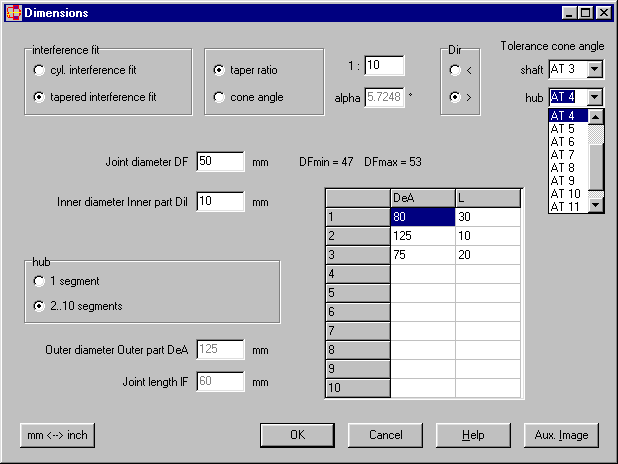
When designing conical press fits with WN1, you can choose a tolerance class for the cone angle AT1 to AT12 according to DIN 7178.
SR1+ Flange Load
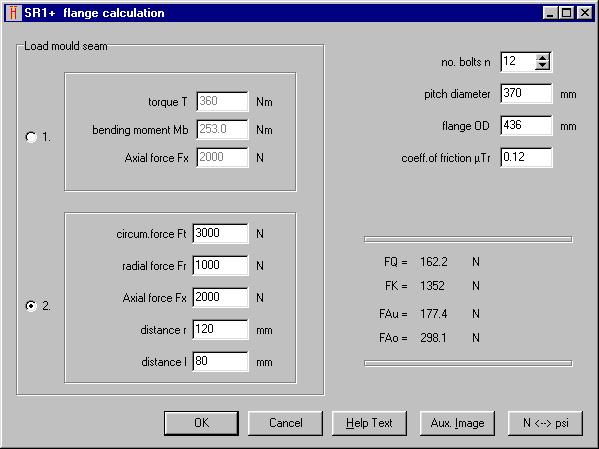
Data from flange bolt calculation with method 2 (Input of tangential load, radial load, axial load, load radius, seam distance) are saved now. Calculated loads Fao, Fau, FQ and FK are used for bolted joint calculation with one bolt.
FED1,2,3,4,5,6,7,8,11: Tolerance for Wire Diameter to EN 10218-2 and EN 10270
EN 10218-2 partly replaces DIN 2076:1984-12. EN defines 5 tolerance grades T1 to T5.
For spring material to EN 10270-1 and EN10270-2, wire tolerances are defined according to EN 10218:
T5 to EN 10218-2:1996 for d < 0.8mm T4 to EN 10218-2:1996 for 0.8mm <= d <= 10mm T3 to EN 10218-2:1996 for d > 10mm
For spring material to EN 10270-3, other tolerances are valid, defined at EN 10270-3:2001, Table 5.
For tolerances of hot-formed wire there is no European Norm available right now, so use DIN 2077.
At "Edit->Material" in all FED programs, you can choose between old and new tolerance classes. The selected tolerance class is used in printout and production drawing.
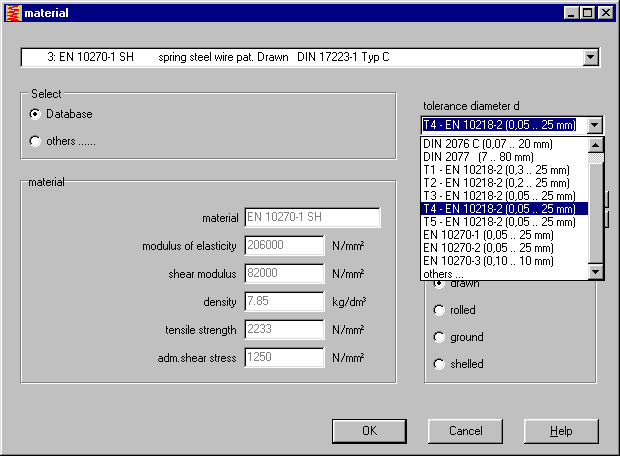
FED1,2,3,4,5,6,7,8,11: Wire Size Standard according to EN 10270-1 and DIN 2077
For use of standard wire size from database, you can choose between EN 10270-1 and DIN 2076 for cold-formed springs, and DIN 2077 for hot-formed springs.
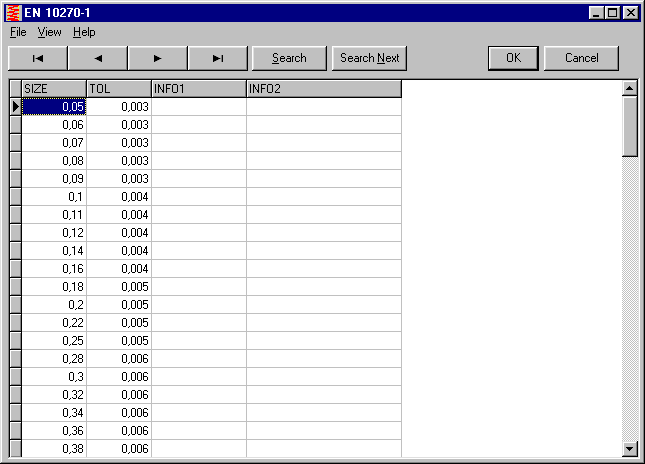
Click "DB" button at "Edit->Database->Recalculation" to get EN 10270-1 database (cold-formed springs) or DIN 2077 (hot-formed springs).
FED1+ Production Drawing according to DIN 2099-1:2003-02
DIN 2099-1:2003-02 includes a new draft for production drawing. This is valid for cold-formed springs only. A table drawing for warm-formed springs is described at a new DIN draft 2099-3.
In new version of FED1+ you may alternatively print the production drawing according to DIN 2099-1:2003-02 for cold-formed springs.
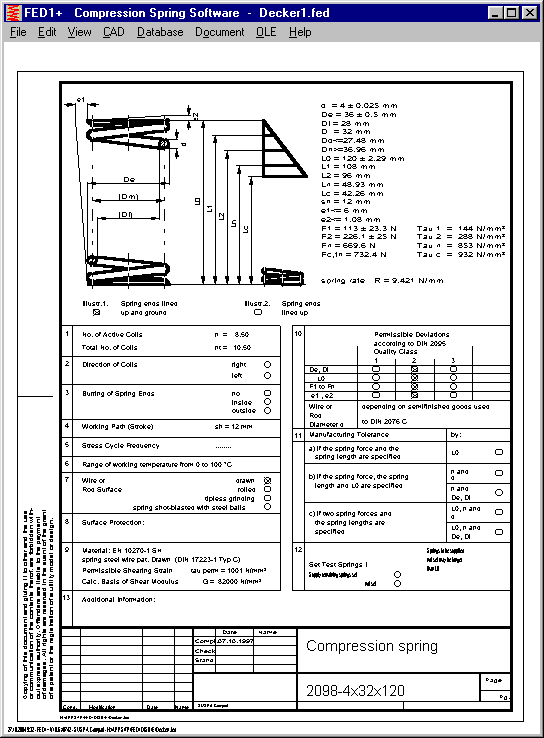
FED1 Production Compensation
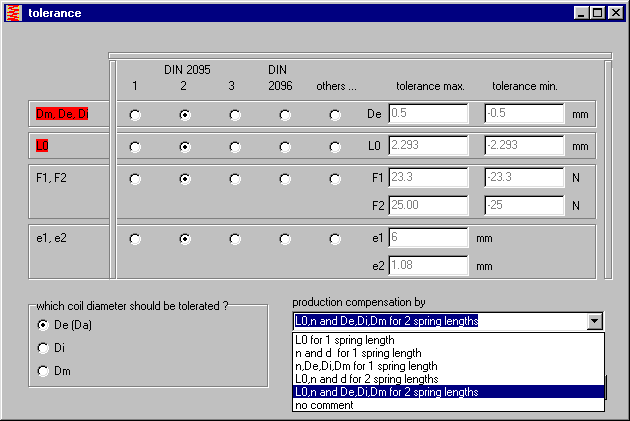
Dimension you released for production compensation must not be tolerated. For these dimensions, in production drawing is neither tolerance grade marked nor tolerance displayed.
To show this relation already at selection of production compensation, fields for compensation dimensions are marked red.
FED8 Production Drawing
Newest version of FED8 software generates a production drawing of the calculated torsion bar.
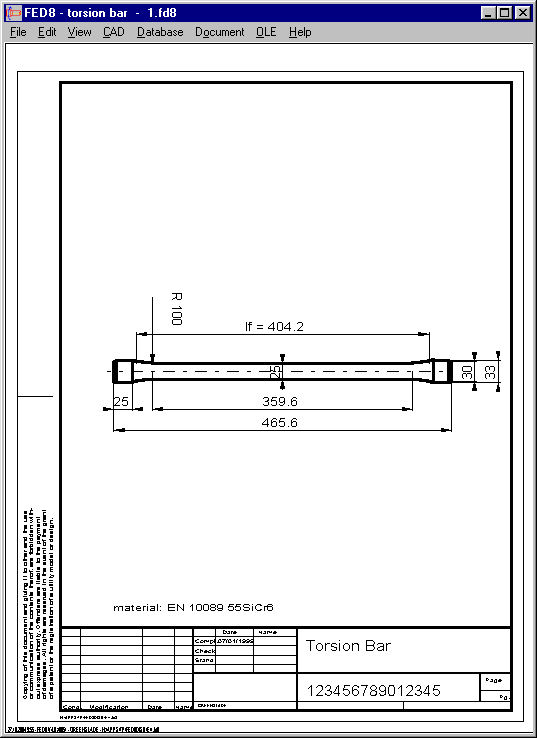
FED9, FED10 Flat Material for Spiral Springs and Leaf Springs
Material database fed9wst.dbf for flat steel was modified. Tensile strength of flat material, dependent on band thickness, is about 10% .. 30% less than for round wire of the same diameter.
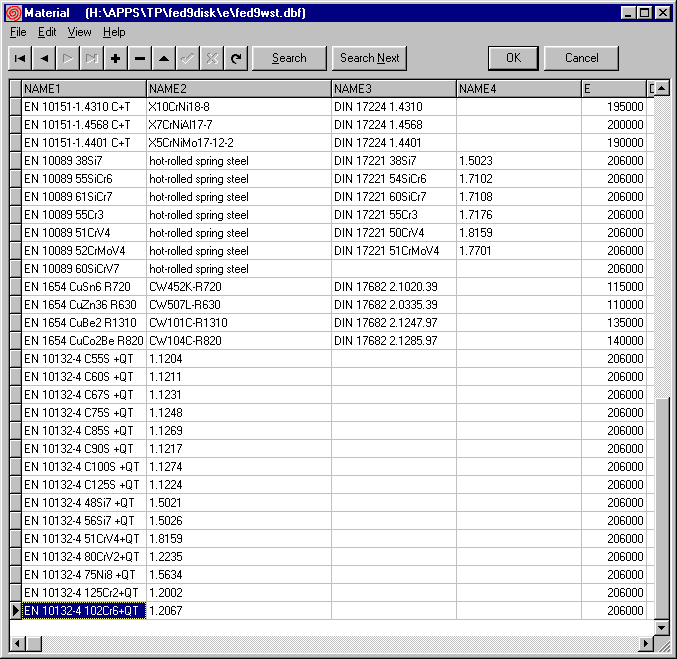
For fed9wst database, all materials were deleted that are available for round wire only.
Stainless steel 1.4310, 1.4401 and 1.4568 is available as flat and round wire; material data were adapted to EN 10151.
Material data for hot-rolled steel have been adapted to Euronorm EN 10089.
Copper alloys are described at EN 1654. Materials that are suitable for springs (spring temper) are part of fed9wst database.
Materials from new Euronorm EN 10132-4 (cold-rolled spring steels) have been added to fed9wst. It can be used instead of Ck45, Ck 75, Mk75, Ck85.
FED9 Material Database for Round Wire
Since release 2.0, you can use FED9 to calculate spiral springs from round wire as well. Material database fed9wst included materials of flat and round wire. The new version of FED9 comes with two material databases: fed9wst for flat steel, and fedwst for round wire.